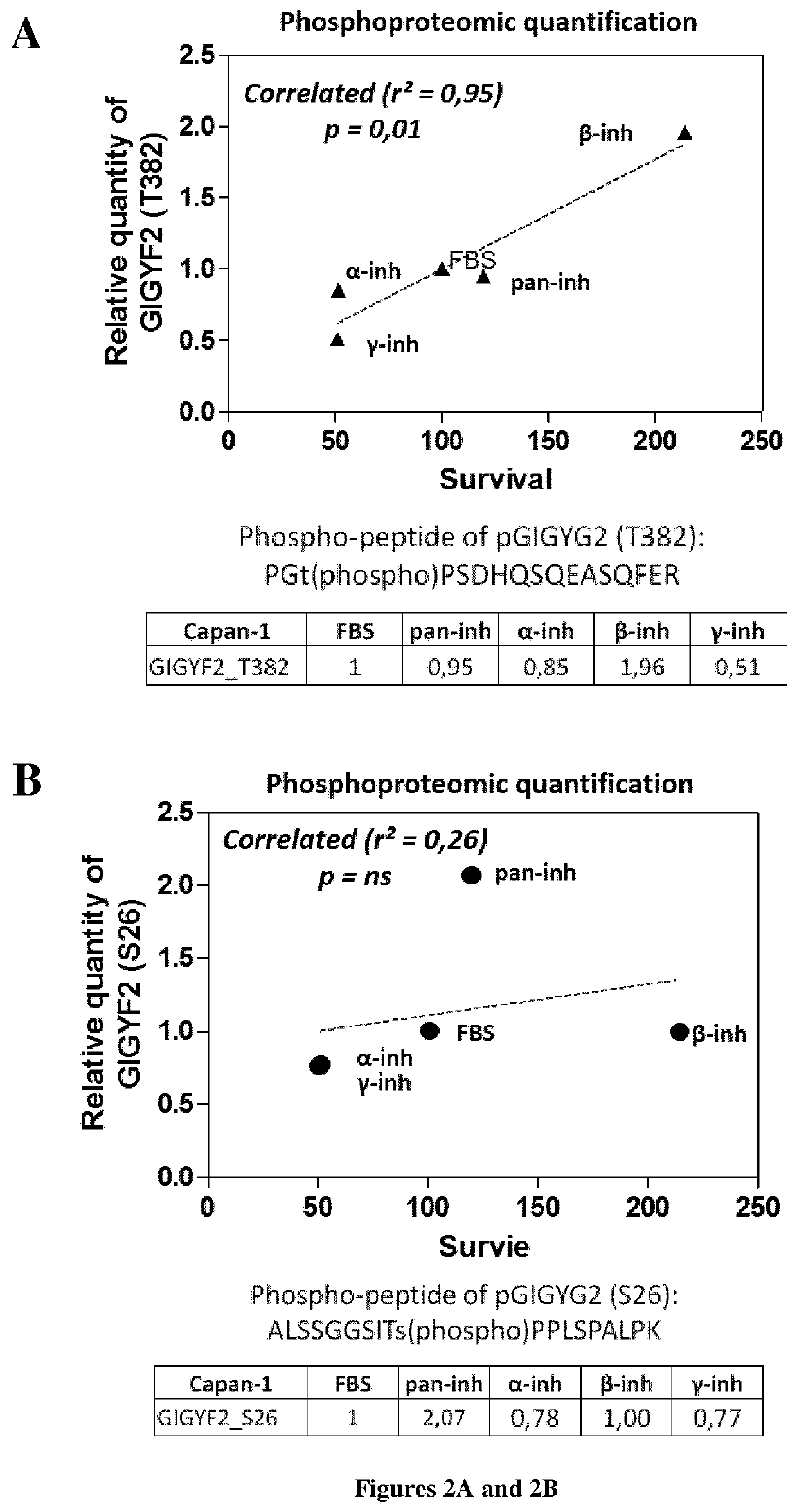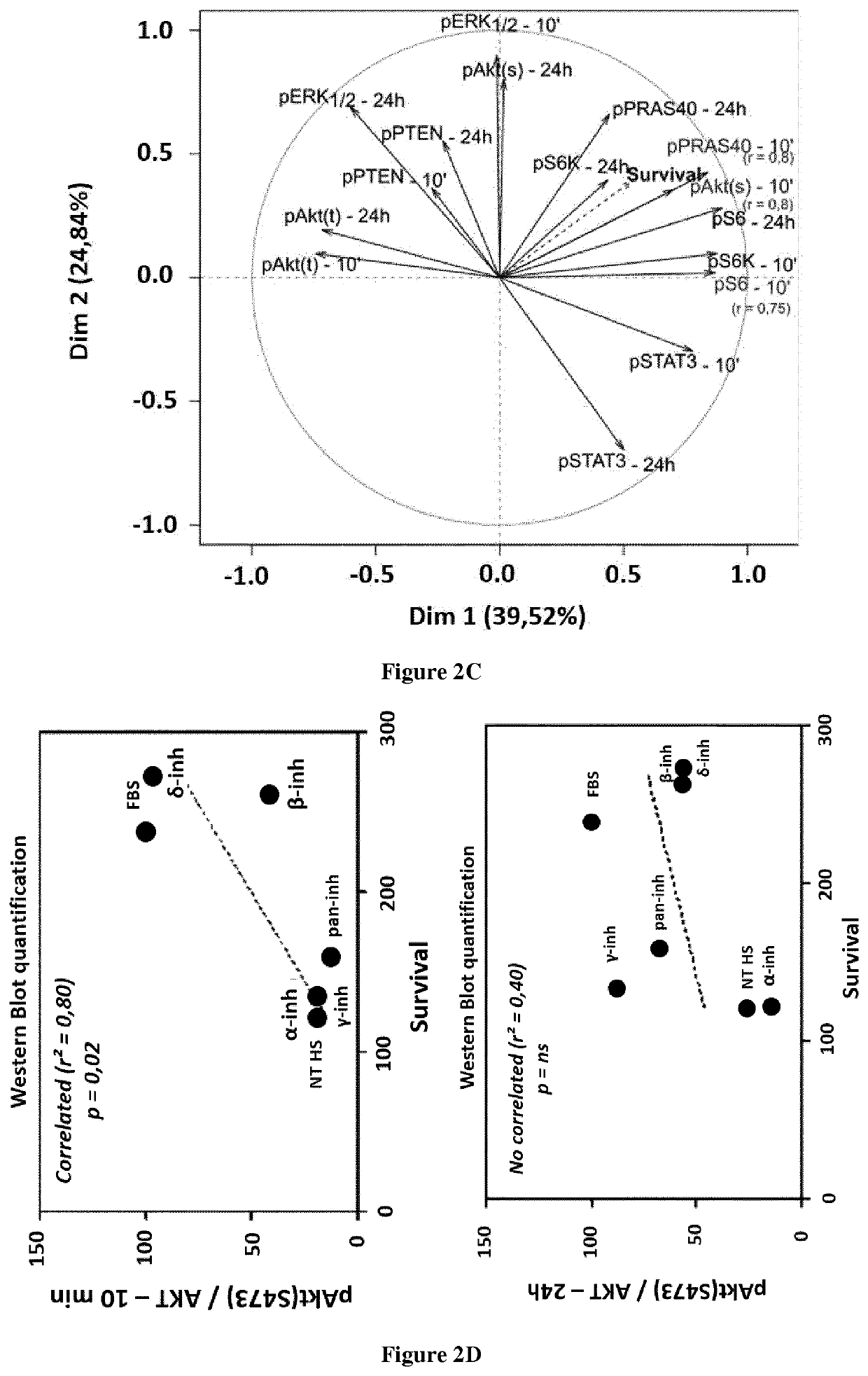A new marker for predicting the sensitivity to pi3k inhibitors
a technology of inhibitors and markers, applied in the direction of peptide sources, instruments, tumor rejection antigen precursors, etc., can solve the problems of clinical trials of signal-targeted therapies that have failed to meet the needs of patients
- Summary
- Abstract
- Description
- Claims
- Application Information
AI Technical Summary
Benefits of technology
Problems solved by technology
Method used
Image
Examples
example
[0042]Material & Methods
[0043]Cell Lines and Tissue Samples
[0044]Human pancreatic ductal cell lines (HPNE, HPNE hTERT and HPDE) were a kind gift from Tsao MS (Toronto, Canada); human pancreatic cell lines (Capan-1, BxPC-3, PANC-1, MIA PaCa-2) came from American Type Culture Collection (ATCC), human acute myeloid leukemia cell line (MOLM4) was a kind gift from Jean-Emmanuel Sarry (CRCT, France) and murine pancreatic cancer cell lines (DT4994, DT6585, DT6606, DT8442, DT8661, R221, R259) were a kind gift from Dieter Saur (Klinikum rechts der Isar der TU München, Germany). Patient organoid cell cultures were obtained by Maximilian Reichert (Klinikum rechts der Isar der TU München, Germany) collected during surgery. Human normal and adenocarcinoma pancreatic samples (>30% tumoral cells) were selected by A Brouchet-Gomez, and collected according French and European legislation (CRB, France). Murine pancreas samples were obtained from LSL-KrasG12D; Pdx1-Cre (named KC) and Pdx1-Cre or p110α...
PUM
| Property | Measurement | Unit |
|---|---|---|
| Sensitivity | aaaaa | aaaaa |
Abstract
Description
Claims
Application Information
 Login to View More
Login to View More - R&D
- Intellectual Property
- Life Sciences
- Materials
- Tech Scout
- Unparalleled Data Quality
- Higher Quality Content
- 60% Fewer Hallucinations
Browse by: Latest US Patents, China's latest patents, Technical Efficacy Thesaurus, Application Domain, Technology Topic, Popular Technical Reports.
© 2025 PatSnap. All rights reserved.Legal|Privacy policy|Modern Slavery Act Transparency Statement|Sitemap|About US| Contact US: help@patsnap.com



